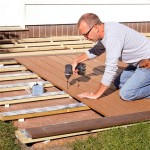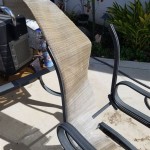How Do You Kill Moss On Patio Pavers
Moss, while visually appealing in some settings, can quickly become a nuisance on patio pavers. It creates a slippery surface, posing a safety hazard, and detracts from the aesthetic appeal of paved areas. Effectively removing moss requires understanding its growth habits and employing appropriate methods. This article provides a comprehensive guide to eliminating moss from patio pavers.
Understanding Moss Growth
Moss thrives in damp, shaded, and acidic environments. Compact soil and poor drainage further contribute to its proliferation. Pavers, particularly in shaded areas or regions with high humidity, often provide the ideal conditions for moss growth. The porous nature of certain paver materials can also trap moisture, making them even more susceptible. Before attempting removal, it’s essential to address these underlying conditions to prevent moss from returning.
Understanding the moss life cycle is also crucial. Moss reproduces through spores, which are microscopic particles carried by wind and water. These spores can lie dormant for extended periods before germinating under favorable conditions. Therefore, thorough removal of existing moss and preventative measures are key to long-term control.
Mechanical Moss Removal
Mechanical removal methods offer a non-chemical approach to tackling moss growth. These methods are particularly effective for smaller areas or for addressing initial infestations. One of the most straightforward techniques involves using a stiff brush or broom to scrub the affected pavers. A pressure washer can also be used, but it’s important to exercise caution, as excessive pressure can damage certain paver materials. For larger areas, a power washer with rotating surface cleaner attachments can speed up the process significantly. After removing the bulk of the moss, it's crucial to sweep or rinse away the debris to prevent re-establishment.
For stubborn moss deeply embedded in the paver crevices, a scraper or putty knife can be employed. This method requires careful attention to avoid scratching or damaging the paver surface. When using metal tools, exercise caution to prevent leaving marks. A plastic scraper can be a safer alternative for delicate pavers.
Chemical Moss Removal
Various chemical solutions can effectively eliminate moss. These products are readily available at most garden centers. Common moss killers often contain ferrous sulfate or potassium salts of fatty acids. These chemicals work by dehydrating the moss, causing it to turn brown and die. Always follow the manufacturer's instructions carefully when using chemical moss killers. Wear appropriate protective gear, such as gloves and eye protection. It's crucial to consider the environmental impact of chemical solutions. Some moss killers can harm surrounding plants or pollute waterways. Choosing a biodegradable or environmentally friendly option is recommended.
When applying chemical moss killers, pay close attention to weather conditions. Avoid applying the solution during windy conditions to prevent drift onto desirable plants. Rain can also wash away the chemical before it has time to effectively kill the moss. Applying the solution on a dry, calm day is optimal. After the moss has died, sweep or rinse it away to prevent re-growth.
Preventing Moss Regrowth
After removing existing moss, implementing preventative measures is essential to keep it from returning. Improving drainage is a critical step. Ensure that water flows away from the paved area by grading the surface or installing drainage systems. Trimming overhanging branches and vegetation that create shade can also help reduce moisture and promote airflow, making the environment less conducive to moss growth. Regular sweeping or blowing of leaves and debris will prevent organic matter from accumulating, which can contribute to moss growth.
Applying a moss-inhibiting sealant to the pavers can provide long-term protection. These sealants create a barrier that prevents moss spores from taking hold. Reapply sealant periodically according to the manufacturer's instructions. In some cases, adjusting the soil pH can also help deter moss growth. Moss prefers an acidic environment, so applying lime can raise the pH and make the area less hospitable to moss.
Regularly inspecting the paved area for signs of moss regrowth is essential for early intervention. Addressing small patches of moss promptly can prevent a larger infestation from developing. By combining effective removal methods with preventative measures, it’s possible to maintain a moss-free patio and enjoy its beauty and functionality.

How To Clean Your Patio And Kill Moss Red

How To Kill And Prevent Sidewalk Patio Moss

Yes You Can Kill Patio Moss With Vinegar Here S How

Get Rid Of Patio Moss The Paver Savers Northampton Pa

When S The Best Time To Remove Moss From Pavers You May Be Surprised Roof Floor

How To Remove Moss From Pavers A Handy Guide
How To Clean Moss Off Patios Driveways Paths

How To Kill And Prevent Sidewalk Patio Moss

How To Remove Moss From Paving And Concrete Without A Pressure Washer Or Scrubbing Express Co

How To Remove Moss Between Patio Stones
See Also








